Module 3 Body Language and Non-Verbal Communication Reading 课件(31张PPT)
文档属性
| 名称 | Module 3 Body Language and Non-Verbal Communication Reading 课件(31张PPT) | 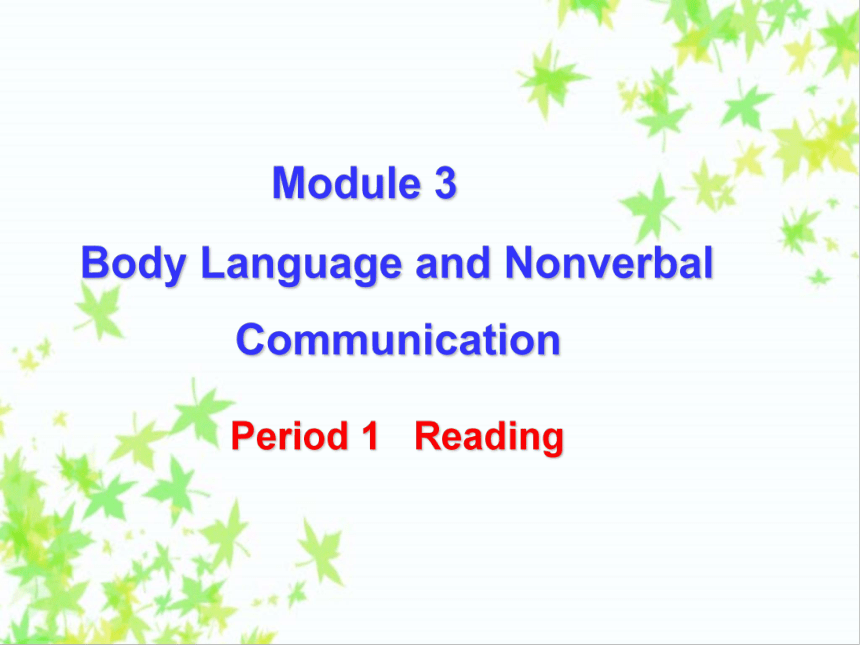 | |
| 格式 | zip | ||
| 文件大小 | 3.4MB | ||
| 资源类型 | 教案 | ||
| 版本资源 | 外研版 | ||
| 科目 | 英语 | ||
| 更新时间 | 2019-08-19 21:17:19 | ||
图片预览

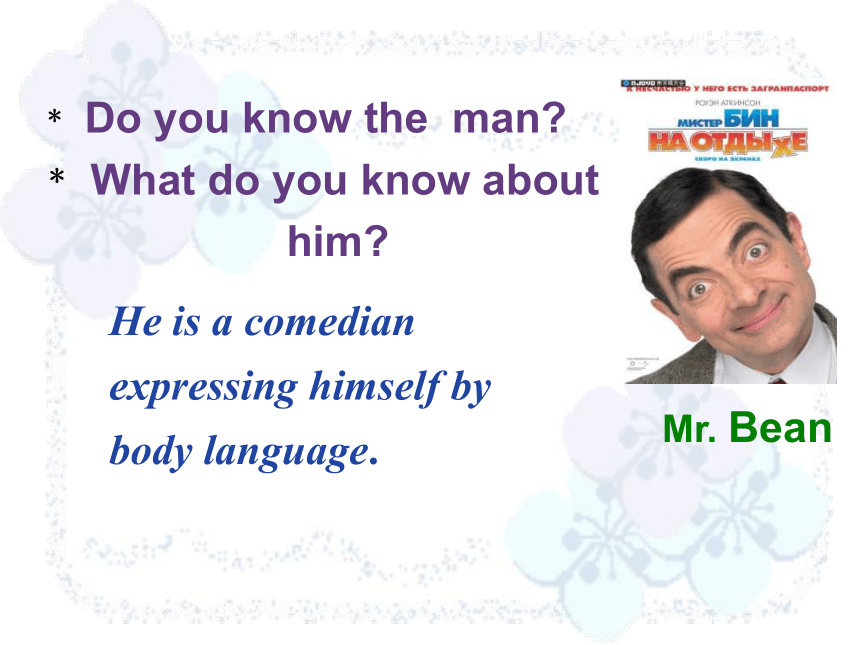
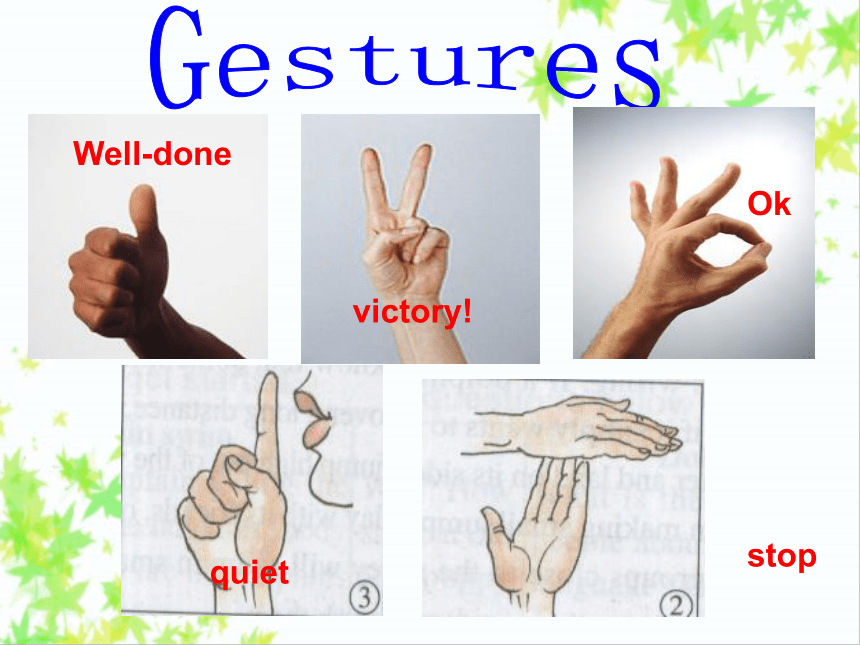

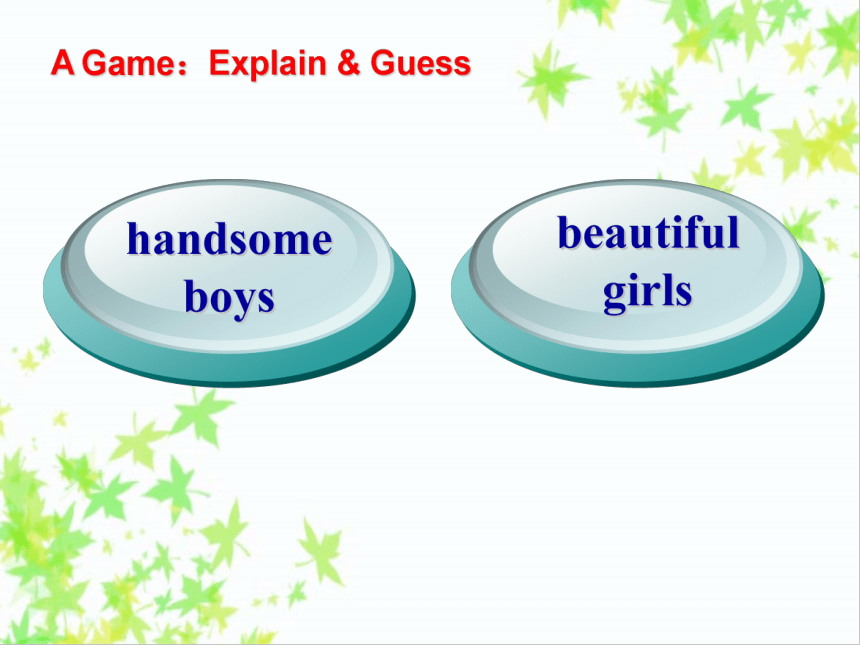

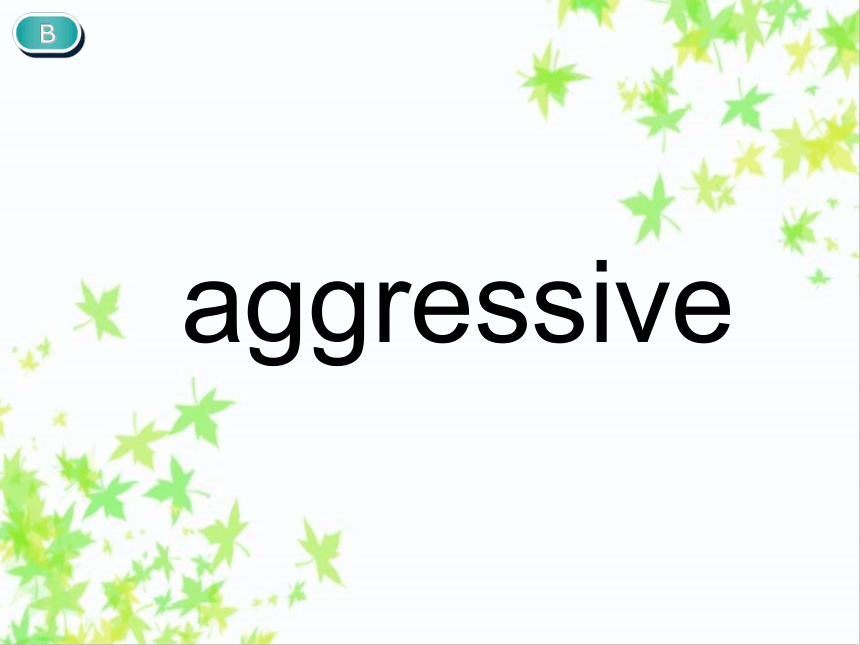

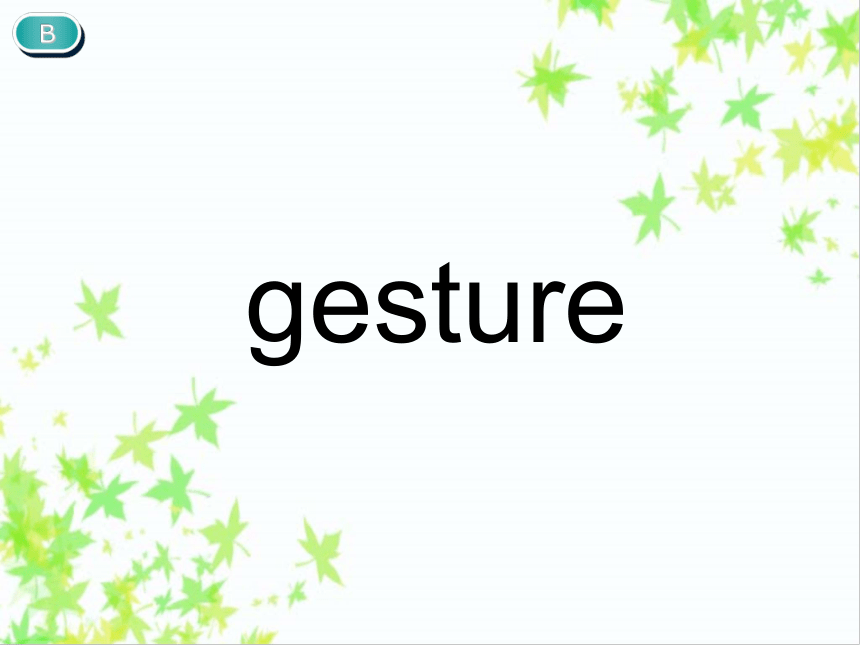

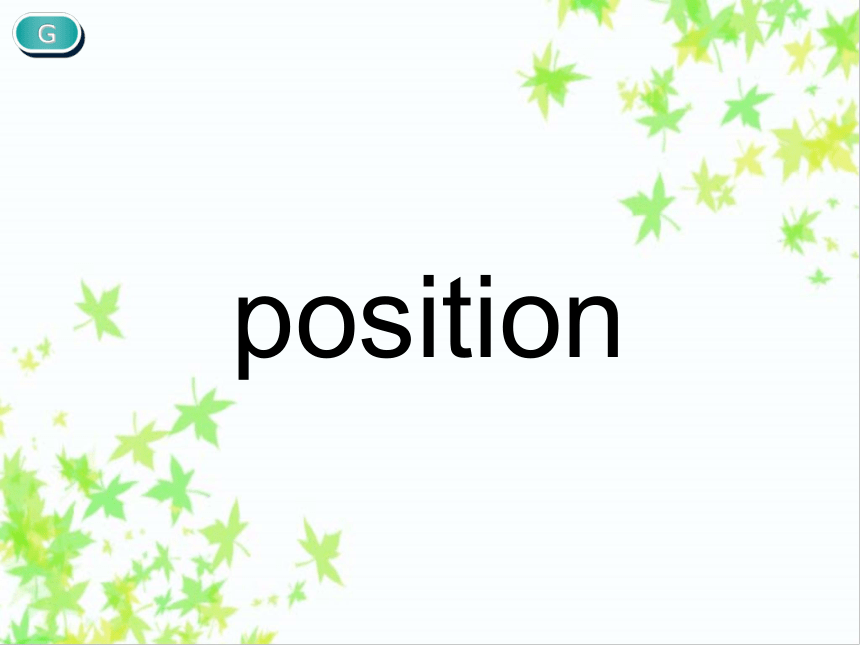
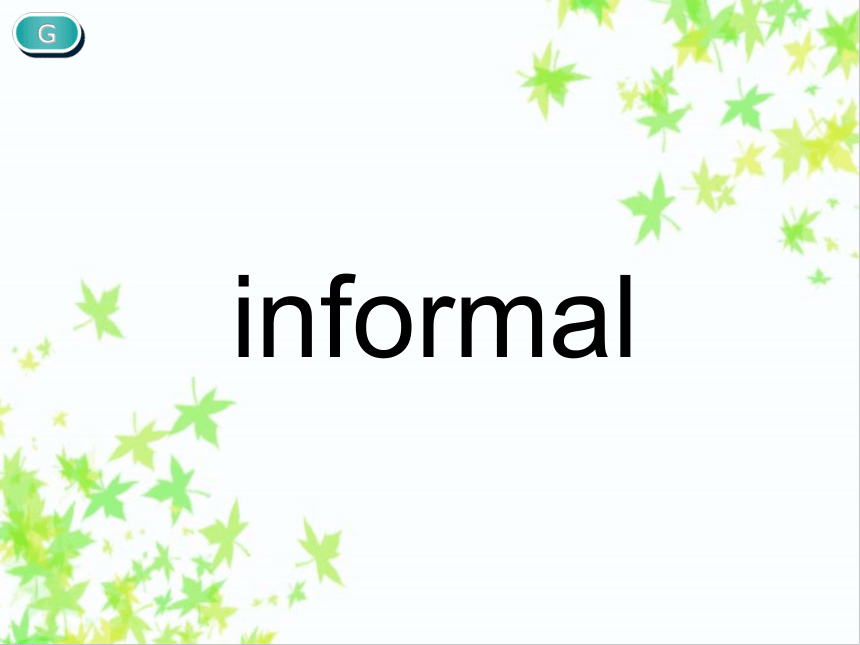
文档简介
课件31张PPT。Period 1 Reading Module 3
Body Language and Nonverbal
Communication﹡ Do you know the man?
﹡ What do you know about
him?Mr. BeanHe is a comedian expressing himself by body language.GesturesWell-donevictory!Okquietstop BrainstormA Game:Explain & GuessBdealBaggressiveBgreetBgestureBformalGpositionGinformalGunconsciousGtrustGweaponFast readingRead the passage quickly and silently then choose the best title.A. Saying It Without Words
B. When in Rome,
do as the Romans Do.
C. Greetings Around the World
D. Read My MindMatch column A with column B
Careful readingPara 1 : Read carefully and fill in the blanks:Communicationwords
and
sentencesbody language1.____________spoken words2. written words1.body positionlearned body language2._______________________unconscious body language3.______________________
Para 2: Read the second paragraph and answer the questions:
1.What body language is used when we are introduced to
strangers?
2.Which hand do Europeans and Americans shake hands with
traditionally ?
What is the meaning of shaking hands in this way?
3. What do we do when we make a deal ?
“Learned” body language .
Europeans and Americans shake hands with right hand. To show others that they are not aggressive.
We shake hands when we make a deal .It means “we agree
and we trust each other.”
Para 3 : Read the third paragraph and fill in the blanks
Put the right hand over the left and bow slightly Touch their heart, mouth and forehead
Join their hands and bow their heads in respect
Paragraph 4 and 5:
Read the two paragraphs and answer the question:
How do the Americans youths often greet each other ?
Americans youths often greet each other with the
expression, “ Give me five”…
Read the passage again and say if these statements are true or false,and correct it.
1. Not all body language is conscious.
2. Europeans shake hands with their left hand.
3. In Asia, people touch strangers when they meet.
4. In the US a “high five” is a way of saying hello.
5. A “high five” is a formal gesture.
6. Body language is less communicative than
spoken or written language.Post readingPractice:
1)How should we understand the word“ communication”?
A. It only refers to words and sentences.
B. It refers to spoken and written words.
C. It refers to not only spoken and written words but
also body language.
D. None of the above.
2)Which sentence is the topic sentence of the second
paragraph?
A. The first sentence.
B. The second sentence.
C. The third sentence.
D. The last sentence.3)How do Muslims greet one another?
A. They shake hands.
B. They give a “salaam”.
C. They join their hands and bow their heads in
respect.
D. They bow their heads.
4)What do you know about the “high five”?
A. It is a formal gesture.
B. It’s popular in China.
C. It’s preferred by the adults when they greet.
D. It is popular among the young people in America.5)Which is NOT true according to the text?
A. Europeans shake hands with their right hand when
they greet.
B. Body language varies from culture to culture.
C. In Asian countries greeting involves touching each
other.
D. People can give away more by gestures than by
their words.
6)Which of the following can we not conclude from this
passage?
A. All body language is not “learned”.
B. Shaking hands means “trust”.
C. The right hand is generally thought to be stronger
than the left hand.
D. Body language has the same meaning in every
culture.
Acting and ExpressingChoose one of the following situations to act out,using the proper body language to help you.
Situation 1 You are visiting a city in England and need to buy some apples. You only know a little English and want to know where you can get them and how much you cost.
Situation 2 Meet a friend and talk to each other.Homework1.Find out the difficult sentences in the passage.
2.Retell the phrases in the passage
Body Language and Nonverbal
Communication﹡ Do you know the man?
﹡ What do you know about
him?Mr. BeanHe is a comedian expressing himself by body language.GesturesWell-donevictory!Okquietstop BrainstormA Game:Explain & GuessBdealBaggressiveBgreetBgestureBformalGpositionGinformalGunconsciousGtrustGweaponFast readingRead the passage quickly and silently then choose the best title.A. Saying It Without Words
B. When in Rome,
do as the Romans Do.
C. Greetings Around the World
D. Read My MindMatch column A with column B
Careful readingPara 1 : Read carefully and fill in the blanks:Communicationwords
and
sentencesbody language1.____________spoken words2. written words1.body positionlearned body language2._______________________unconscious body language3.______________________
Para 2: Read the second paragraph and answer the questions:
1.What body language is used when we are introduced to
strangers?
2.Which hand do Europeans and Americans shake hands with
traditionally ?
What is the meaning of shaking hands in this way?
3. What do we do when we make a deal ?
“Learned” body language .
Europeans and Americans shake hands with right hand. To show others that they are not aggressive.
We shake hands when we make a deal .It means “we agree
and we trust each other.”
Para 3 : Read the third paragraph and fill in the blanks
Put the right hand over the left and bow slightly Touch their heart, mouth and forehead
Join their hands and bow their heads in respect
Paragraph 4 and 5:
Read the two paragraphs and answer the question:
How do the Americans youths often greet each other ?
Americans youths often greet each other with the
expression, “ Give me five”…
Read the passage again and say if these statements are true or false,and correct it.
1. Not all body language is conscious.
2. Europeans shake hands with their left hand.
3. In Asia, people touch strangers when they meet.
4. In the US a “high five” is a way of saying hello.
5. A “high five” is a formal gesture.
6. Body language is less communicative than
spoken or written language.Post readingPractice:
1)How should we understand the word“ communication”?
A. It only refers to words and sentences.
B. It refers to spoken and written words.
C. It refers to not only spoken and written words but
also body language.
D. None of the above.
2)Which sentence is the topic sentence of the second
paragraph?
A. The first sentence.
B. The second sentence.
C. The third sentence.
D. The last sentence.3)How do Muslims greet one another?
A. They shake hands.
B. They give a “salaam”.
C. They join their hands and bow their heads in
respect.
D. They bow their heads.
4)What do you know about the “high five”?
A. It is a formal gesture.
B. It’s popular in China.
C. It’s preferred by the adults when they greet.
D. It is popular among the young people in America.5)Which is NOT true according to the text?
A. Europeans shake hands with their right hand when
they greet.
B. Body language varies from culture to culture.
C. In Asian countries greeting involves touching each
other.
D. People can give away more by gestures than by
their words.
6)Which of the following can we not conclude from this
passage?
A. All body language is not “learned”.
B. Shaking hands means “trust”.
C. The right hand is generally thought to be stronger
than the left hand.
D. Body language has the same meaning in every
culture.
Acting and ExpressingChoose one of the following situations to act out,using the proper body language to help you.
Situation 1 You are visiting a city in England and need to buy some apples. You only know a little English and want to know where you can get them and how much you cost.
Situation 2 Meet a friend and talk to each other.Homework1.Find out the difficult sentences in the passage.
2.Retell the phrases in the passage
